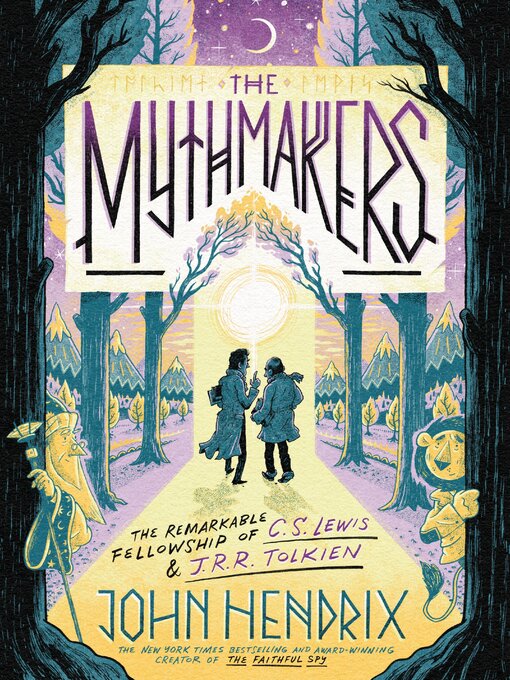- Available Now
- Newly Added Audiobooks
- Newly Added Childrens Audiobooks
- Newly Added Teen Audiobooks
- See all
"Masterful. . . Effortlessly blending fantasy and reality." (BCCB, starred review)
Through narrative and comic panels, Hendrix chronicles Lewis and Tolkien's near-idyllic childhoods, then moves on to both men's horrific tour of the trenches of World War I to their first meeting at Oxford in 1929, and then the foreshadowing, action, and aftermath of World War II.
He reveals the shared story of their friendship, in all its ups and downs, that gave them confidence to venture beyond academic concerns (fantasy wasn't considered suitable for adult reading, but the domain of children), shaped major story/theme ideas, and shifted their ideas about the potential of mythology and faith.
The Mythmakers also shows the camaraderie and the importance of the social/literary circle of friends called the Inklings, and how the friendship of these two great men fell apart and came together again. Hendrix concludes describing how the writings of C.S. Lewis and J.R.R. Tolkien had re-enchanted the 20th century, after two World Wars.
In writing aimed at scholars, adults, and young people, these two tweedy academics altered the course of storytelling and embraced the concept that fantasy writing for an adult audience was an accepted form of literature.
The format is similar to The Faithful Spy: prose interspersed with images and narrative comics. The narration is often conversations between a knowledgeable wizard and a comical lion. Through brisk conversation between these two friends, they explain some of the bigger ideas in an approachable and entertaining way.
Throughout the story, there are "gateways" that lead readers to the back matter where certain themes, such as how myth/fantasy evolved or the art of world-building, are discussed more fully. This device keeps the main story flowing quickly and smoothly for those readers not interested in the more academic ideas behind the narrative.
Among the ideas covered in the narrative and back matter:
‑ Tolkien's world-building
‑ The "Theology of Creation" linking their faith to their writings
‑ The meaning of real friendship
‑ Notions of modernity and mythology
‑ The value of fantasy
‑ The power of a creative community
‑ An exploration of the different kinds of storytelling in Narnia and The Lord of the Rings, both relying on "the Myth" as a storytelling device, but differing in the use of allegory vs. symbolism
‑ The creative differences of Lewis and Tolkien: the high standards of Tolkien's fiction and the faster and more immediate approach of Lewis's
‑ Logos vs. Mythos: Lewis created from images, Tolkien created from language
‑ The mixing of mythologies
Also included are an author's note, endnotes, bibliography, and index.

